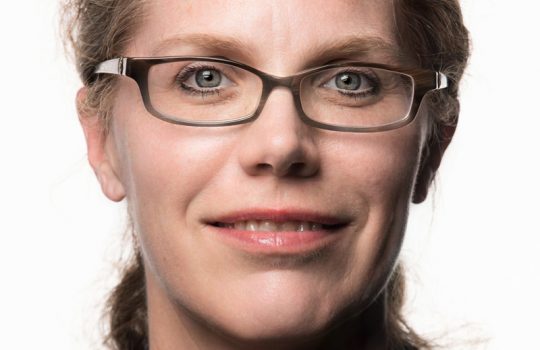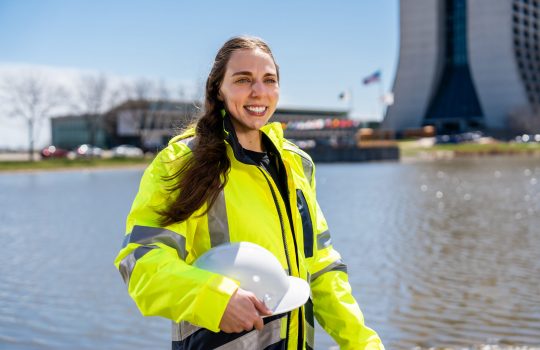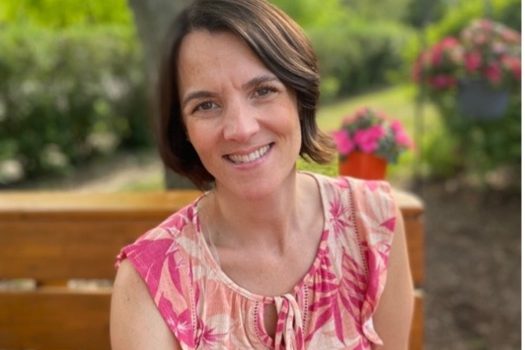
Karen Kosky and her team maintain the Fermilab site and keep lab’s conventional facilities and property operations running smoothly. And there is a reason for she keeps a large pipe on her desk. Photo: Reidar Hahn
How long have you been at Fermilab?
About two and a half years. I came in as the deputy head of the Facilities Engineering Services Section and was promoted to head about a year ago.
What is your role at Fermilab?
That’s a tough one, you know.
The Facilities Engineering Services Section is a group that maintains all conventional facilities and utilities across our site. We’re a team that designs, constructs, operates and maintains buildings and utilities. Our team also manages all of the open space on site. We even manage the bison.
And then we have a team dedicated to managing personal property, which includes shipping, receiving, tracking and disposing of things you can move, like laptops, chairs, oscilloscopes and vehicles.
It’s a diverse team. And my role is really just overseeing all of those operations and making sure that we are paying attention to meeting laboratory goals and contract requirements.
What is a day in your life like?
A neat part of the job is its variety. We could be meeting on any given day to discuss employee development strategies, bison herd issues or long-term strategic financial planning for site infrastructure.
It’s a pretty diverse set of day-to-day experiences.
What are you working on now?
This is a unique time to be working in conventional facilities at Fermilab. Our facilities have reached an age where they need a lot of attention. We are in the middle of putting together some proposals for significant infrastructure funding to bring more resources to the site so we can refresh it and renew some of the infrastructure that keeps this site running.
What is your favorite thing about working at Fermilab?
It’s got to be the people, right? I mean, what a fascinating place to work, with brilliant people from all over the world pursuing these fundamental questions about life and the universe.
You know, I work in a kind of ordinary field of conventional facilities and property management. But when you do that in the environment of this fascinating science laboratory, it’s just a neat place to come to work every day.
What is something that might surprise other Fermilab employees?
The bison are a fairly low-maintenance activity on site, actually. But every year they require annual inoculations.
This is something that few people on site ever get a chance to see. But the grounds team goes through a process of corralling the bison into a series of chutes that eventually bring one bison at a time through a holding pen where they administer shots to the bison.
It’s a really fascinating process to watch. Because how often at a national science lab do you get to see folks corralling giant mammals through wooden chutes to be administered vaccinations?
Why do you have a large, rusty pipe on the counter of your office?
The former head of the Facilities Engineering Services Section, Kent Collins, had a veritable museum of misfit infrastructure pieces. When he retired, he graciously offered to pass on the museum, and I declined most of the pieces, except this one. I thought it was fitting to keep at least one symbol.
It’s an elbow joint for a ductile-iron drainage pipe. And it’s a good example of infrastructure that was installed in the most frugal way possible. It should have had something on it called cathodic protection to protect the pipe from the damaging effects of conductivity in the soil, and it didn’t. So it was vulnerable to degradation much quicker than we should have seen.
A little bit, it just reminds me of Kent Collins, who’s a fun guy to know. But a little bit also, it reminds me that we want to do things in the future in the right way and not cut corners so that we’re investing our limited dollars in the best way possible.



